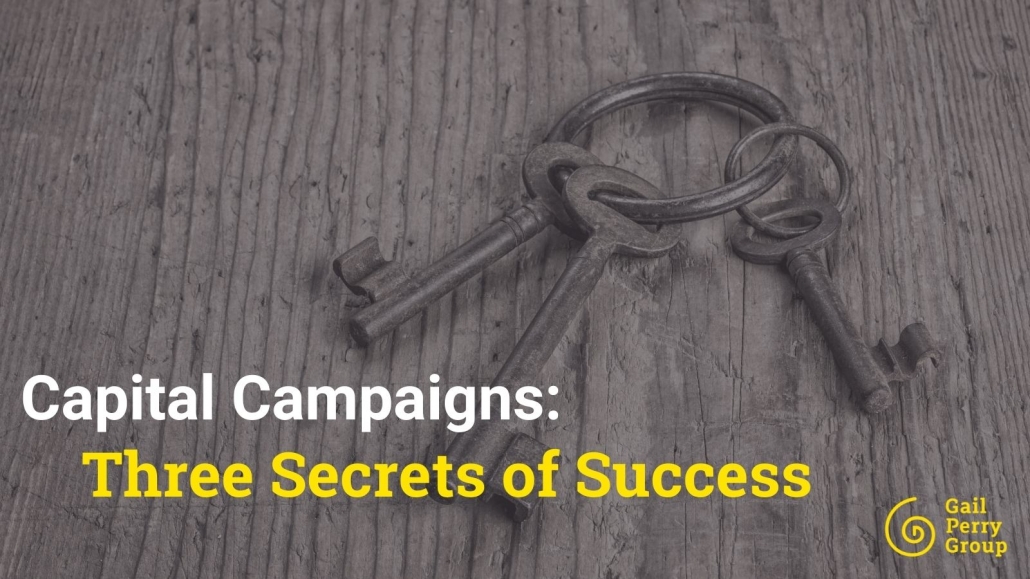110 Tips to Raise More Money from Your Solicitation Letter for Donations
How to write an solicitation letter that will open our donors’ hearts and prompt them to make generous gifts?
So many nonprofits struggle with this challenge. And unfortunately, many efforts to write appeal letters end up falling flat with donors.
Why are solicitation letters so important?
Fundraising solicitation letters are the backbone of your annual fundraising campaigns that your nonprofit absolutely relies on.
Many annual giving programs include direct mail integrated with social media and digital appeals to create a true campaign. These tips focus mostly on the direct mail solicitation package, but they also apply directly to digital appeals as well.
Your Annual Donors
Your annual donors are very special people – they’re the foundation of a sustainable fundraising program. These donors produce a revenue stream that your organization can rely on year after year.
Large gifts are coming in too. Believe it or not, we are seeing more and more four, five, and even six-figure gifts coming in thru regular direct mail and digital fundraising campaigns.
Smaller donors are so important!
Direct mail and digital campaigns typically focus on smaller gifts. These campaigns can also trigger monthly pledges and even (surprise!) estate gifts.
Since these are some of the most important communications vehicles your organization will ever have, let’s nail your next appeal campaign.
Caveat: These are basic tips that form the very basis of good solicitation campaigns. Try using this tip sheet as a checklist for your next appeal campaign.
Raise all the money you need by following these very basic, best practice tips:
THE BIG PICTURE – Top 10 Tips
- Use the same fundraising solicitation message and call to action in your mail solicitations, on your website, and in your email appeals –this reinforces your message over and over.
- Focus more on your donor and what they may want to accomplish. Focus less on your own organization’s accomplishments and needs.
- The appeal letter or message can have only one objective: a clear ask for support. It is not a newsletter, an end-of-year report, an update, or mixed in with other communications.
- Your top priority is always to renew your past donors. They are your customer base – your “money in the bank.” Don’t let them slip away.
- Be sure to communicate with your donors frequently between solicitations so they are up to date-and feel connected to your organization. How well you stay in touch with your donors will determine whether they give again.
- Maintain control. Don’t let a committee approve or edit your letter. If you let well-meaning but unknowledgeable people help write your appeal, they will ruin it. Too many cooks really do spoil the stew.
- Update your website and make your donation page easy to use. Many donors who receive a snail mail letter will go to your website to make their gift. Be ready to welcome them there with an easy-to-follow online donation process.
- Create an entire campaign. Use phone, postcards, letters, emails, and social media to build a series of appeals. Don’t rely on only one letter to do the work for you.
- Create a budget and look at it as an investment. Know that, if well executed, your direct mail/digital program should yield a 400% return. That is, if you invest $20k in these communications to your donors, you should receive $80k back.
- Never, ever neglect your paper snail mail fundraising appeal letters. People are experiencing deluges of email and very little snail mail. That means that paper letters stand out far more than a digital appeal in a crowded mailbox. Paper letters get your donors’ attention.
How to Write a Solicitation Letter: Draw Your Donors in at the Beginning
- Very important: use the word “you” immediately in the first sentence or two of your appeal.
- Your goal in the letter’s first part is to get your reader’s attention.
- Consider starting with a story to draw your readers in.
- Make your first two sentences so compelling that your donor will want to keep reading. (You can easily lose them in the very beginning.)
- Consider a short, sad story that transforms into a happy one. The sad emotion is what will pull on your donors’ heartstrings.
- Be sure to thank donors for their past support early in the letter. It reminds them of their partnership with you.
- Pretend you are writing to your grandmother. The most generous group of donors are the older ladies. A recent study found that for every $100 men gave, women gave $258.
- Don’t use a lot of photography and fancy layout in your letter or accompanying materials. Too much design makes it much less personal.
- If you use any pictures, be sure they are of people, not buildings. It’s what happens inside the buildings that counts.
How to Write an Solicitation Letter: Make Your Tone Personal and Informal
- Always (of course) send out personalized letters. (Dear Mr. Smith, rather than Dear Friend). Make sure your letter is really addressed to the reader.
- Write to only one person and not a group of people. Emphasize your one-on-one connection with the reader. Don’t use “you” in the plural sense.
- Use contractions – it’s less formal. Formal does not work!
- Make your letter as personal and conversational in tone as you can. Make it sound like you sat down and wrote it to a friend.
- Repeat the word “you” frequently: it’s the most important word in your letter.
- Use the word “I” in the letter to make it more personal and friendly. It does wonders in changing your tone from “institutional” to “personal.”
- Always make your appeal letter about the donor – not about your organization. Help your donors imagine what they can achieve with their gifts.
Write a Fundraising Solicitation Letter and Create a Dynamite Case for Giving
- Talk about opportunities – it’s never about your needs. “We have the opportunity to . . .”
- Make your message emotional. Donors give out of emotion, then justify it with logic.
- Use stories in your copy but only one story. One story is more powerful than three stories. (~Tom Ahern)
- Make your story SHORT but powerful. It can even be a one-sentence story such as, “Monday morning, little Jenny woke up, hungry again.”
- Flatter your donor: Tom Ahern says that you should ask (and flatter your donor) and you thank (and flatter) and report (and flatter.) Neuromarketing studies say that flattery WILL make your donor love you more.
- Can you share measurable results of what you have achieved with other donors’ gifts? Give it a try. (~Penelope Burk)
- DON’T use the words “programs” or “services” any more than you have to. They are boring and too generic.
- Repeat the need and its urgency – several times in the letter. That’s your case for support!
- Use statistics to build credibility and make the cause more concrete.
How to Write a Solicitation Letter That Your Donors Will Actually Read
Assume your reader will . . .
“pick up the four-page letter, look at their name in the salutation, flip over to the P.S., then shuffle the letter around in their hands, maybe start reading here, maybe start reading someplace else, jump around a bit, and then, after this ragged scanning, MAYBE start reading at the beginning.” (~Happy donors blog)
- Make your letter easy to skim and still deliver its message.
- Break up your fundraising letter copy in every way possible. Use headings. Use bullets. Vary the indentation. Use boldface type. Use ellipses . . .
- What will your reader really see? Artwork: 80%; photos: 75%; headlines: 56%; captions: 29%; and very little text! (~Tom Ahern)
- Have plenty of white space on the letter, which makes it easy to read. Wide margins will help.
- VERBS matter: Use snappy action verbs that convey action.
- Use the present tense. Never use the passive voice when you can use the active voice. (~George Orwell). I.e.: “People are being helped.”
- Use short, concise sentences and paragraphs. Vary the length of your sentences and paragraphs for interest.
- Write choppy, jumpy, repetitive copy. (see the reader’s profile above) (~Jeff Brooks)
- Very short paragraphs: No more than three sentences per paragraph.
- Very short sentences: No more than 6 to 8 words in each sentence.
- Write on the 5th-grade level for easy reading. (like these tips.)
- Use a type large enough to read easily. 12 point type is the minimum size for fundraising material. The average age of a donor in a “house file” is 67. The average age requiring reading glasses is 43 yrs old.
- Eliminate every possible word – including adjectives and descriptive phrases – in your copy. “If it is possible to cut a word out, cut it out.” (~George Orwell)
- Write your letter. Then remove the first paragraph and see if it isn’t stronger. You don’t need a long preamble. (~Tom Ahern)
- Longer letters with more pages are more successful than one-page letters. The letter needs to be as long as it takes. Don’t make it too short. (~Harvey McKinnon)
How to Create a Killer Ask in Your Solicitation Letter or Email Appeal
- Make the ask an “invitation” to give.
- Tell your donor explicitly.
- Why this organization? Why this program? Why NOW? Why me?
If your letter doesn’t lay this out, go back to the drawing board.
- Your call to action is the most important part of your letter. Make it clear to donors what you want them to do. And repeat it!
- Give the donor something worth doing that is easy to do. “Restore sight for $25.” (~Tom Ahern)
- Use the MPI formula to ask: Please consider a gift of $ MONEY for a specific PROJECT that will create a specific IMPACT.
- Ask several times in the letter. It’s ok! Especially if it is a long letter – you can ask 4 or 5 times.
- Explicitly tell your donor exactly what THEY can accomplish with their gift. And tell them HOW you will spend the money – what project, what purpose. (~Penelope Burk)
- Make your ask as specific as possible. Donors will give more if they feel their gift is going to something specific.
- Use a matching or challenge gift opportunity and tell your donors it will make their gifts go further. Play up the concept of “leveraging your donor’s gift.”
- Always ask for a specific amount or “the largest contribution you can make.”
- Place your ask in the first part of a paragraph. Don’t bury your ask at the end of a sentence or paragraph – it will get missed.
- Don’t ask for a “gift”. Ask instead for an investment, a contribution, for help, or to supply something special. (Mal Warwick) Also ask the donor to “become a supporter” – this plays on the concept of “donor identity.”
- Create a sense of urgency by asking for an immediate contribution or asking for help with an urgent or critical situation.
- Use please such as “Please send your gift today” or “Please consider a leadership contribution of xxx.”
- Give the donor a deadline for responding and a reason for the deadline.
- Give the donor the option not to give. Recent studies have found this increases donor response. Say:
- Please don’t feel obligated…
- Whether you give is entirely your choice…
- Any amount you want to give will help…
- You are free to say no — I will understand…
Tips to Upgrade Your Annual Donors
- Focus on more frequent gift opportunities each year as a way to upgrade your donors to higher giving levels.
- Establish a monthly giving program. People who give monthly will give much, much more.
- Use gift clubs to encourage higher-level donations. Ask donors to move up to the next level.
- When you ask for an upgraded gift: talk about an increased or enhanced partnership with the donor.
Tips to Raise More From your Top Donors
- Be sure to send your Top Donors special, custom-tailored personal letters and digital appeals.
- Have board and staff members write or visit top donors personally with an individualized appeal.
- Thank them in the opening sentence for their continuing and steadfast support. Emphasize their partnership with your cause.
- Be sure these donors get many warm, personal touches during the year!
- Come right out and ask these donors to make a “leadership gift.”
Create a Full-Scale Campaign and Schedule your Mailings
- Set up a calendar of digital and mail communications and plan ahead. Echo the same theme and ask throughout all the communications.
- Segment your mailing list and mail personalized appeals to specially targeted groups. (i.e., past donors, volunteers, people who have attended your auction, corporate sponsors, board members, and past board members.)
- Mail to donors more often than nondonors.
- Track your LYBUNTS (people who gave “Last Year but Unfortunately Not This”) and send them repeated, cheerful and enthusiastic appeals to be sure they renew. Once a donor has given for two straight years, they are likely to remain a donor for the long run.
- Develop a series of appeals to SYBUNTS. (People who gave “Some Year But Unfortunately Not This Year”). “We’ve missed you!”
- The letters you send to your LYBUNTS and SYBUNTS should remind them of their past support and remind them how much they have helped create your success. (“We love you, we miss you, we want you back!”)
Followup Makes A Huge Difference
- Send a follow-up letter a few weeks after your appeal: “We didn’t hear from you, and we hope you will remain a supporter.
- Studies show that follow-up letters are the most important factor in securing the donor’s gift. (Mal Warwick)
- Follow-up letters need to be short and play on urgency and emotions.
- Write your follow-up letter at the same time you write the first letter.
- Organize the board members to make phone calls to follow up appeals to donors. You can’t lose by following up with a personal call.
How to Welcome New Donors
- Your brand-new donors are the least likely group to renew next year. Only 23% of new donors will typically renew. (~Bloomerang data). Go all out to welcome them!
- So, create a dynamite welcome packet for new donors. This will help them renew when the time comes to ask again.
- Craft an ENTIRE special thank you and communication program for first-time donors. Celebrate the beginning of this partnership!
- Invite new donors to get involved. Move quickly to develop the relationship to keep them on your bandwagon.
- Go all out to welcome online donors just like your mail donors. New online donors are even less likely to renew their gifts than paper donors. Don’t let them fall thru the cracks.
Sharpen Up Your Website
- Include your website address in the snail mail appeal. Even when they give with a check in the mail, donors will probably check out your website.
- Use different landing pages and URLs to track donors’ responses to individual appeals and campaigns. It’s easy, and it’s important.
- From a donor’s perspective, the most important page on your website is “your gift at work.”
Direct Mail: Create a Mailing Packet That Brings Results
- Size matters. Try larger sizes to get your reader’s attention. Or smaller sizes.
- Everything in your mailing should be easy to read and understand.
- Your direct mail packet should include four pieces:
- The solicitation letter
- A reply/pledge card
- A return envelope for the reply card
- The outside envelope.
- Your outside envelope needs to grab your reader’s attention. Put something attention-getting or startling on the outside. NOT a self-serving tagline, though.
- Try bright colors. Target Marketing says, “Using standard #10 white envelopes will guarantee a low response rate unless you are giving away money.”
- Always include a return envelope. It is critically important to make sure it is easy for people to give.
- Be sure your mailing label is attractive and not full of computerized numbers. A “mass market” look to your mailing label can immediately put your letter in the trash.
- The reply slip needs to stand out in the package.
- Put a headline on the reply card, such as “Yes! I want to help!”
- Don’t give your donor more than four choices to consider. More than that will drive your donor away.
- Use checkboxes on your reply slip rather than fill in the blanks.
- But limit the amount of information you request. The more boxes on the reply card, the more confusing it is to your donor. If you confuse your donor, she will likely abandon your donation card.
- Make sure there is room for handwriting on the reply card. Don’t make your donor cramp to write on your card.
- Make the reply card paper easy to write on. And remember to have a large font so your donor doesn’t have to reach for her reading glasses!
- Circle the amount you are requesting from the donor on the reply card.
- Don’t forget to ask for recurring monthly donations!
Now use this list as a checklist – review your mailing program against it and highlight the tips you need to implement.
GOOD LUCK, and may you raise tons of money!







